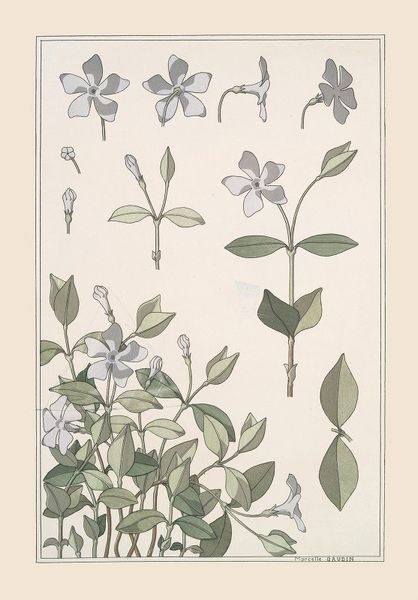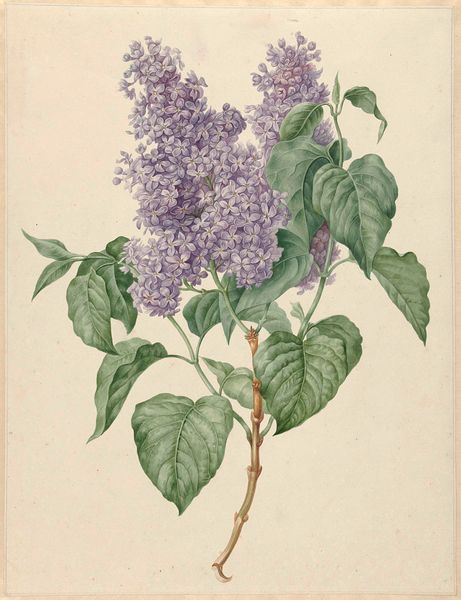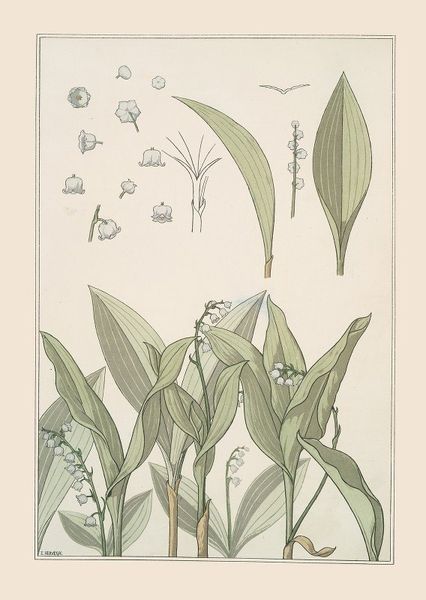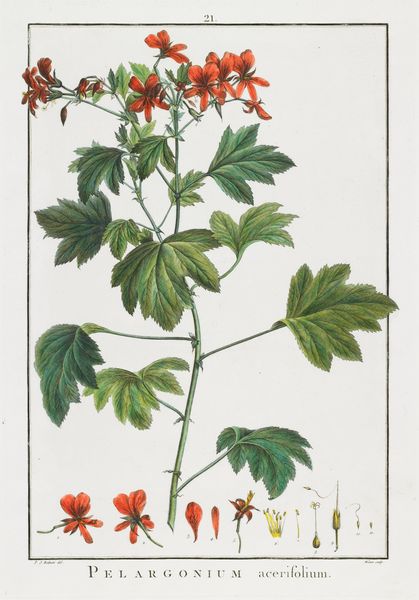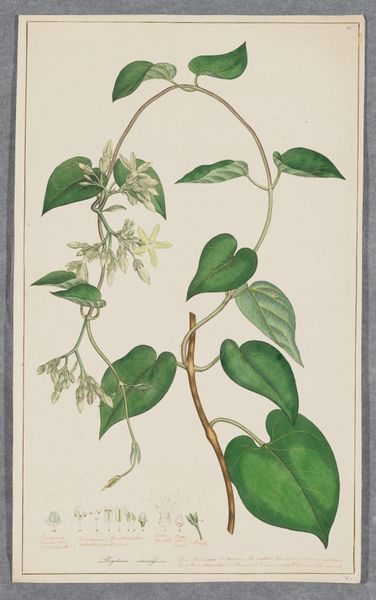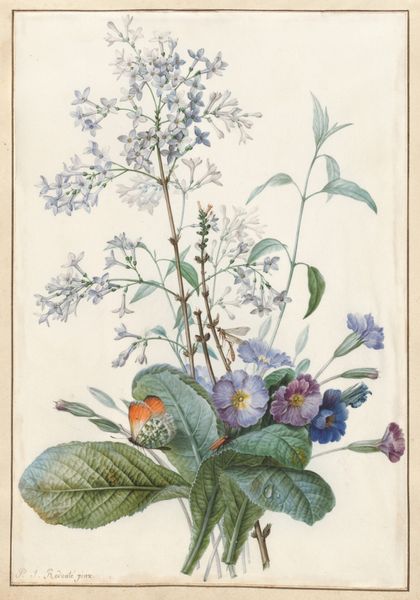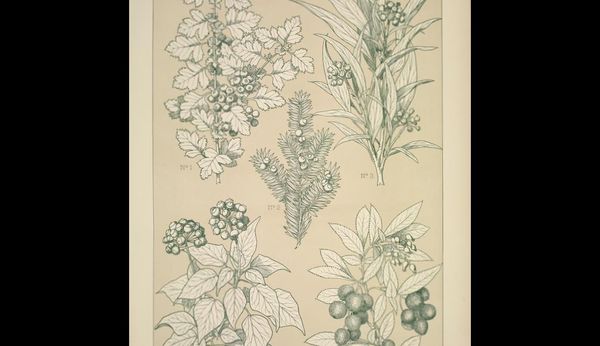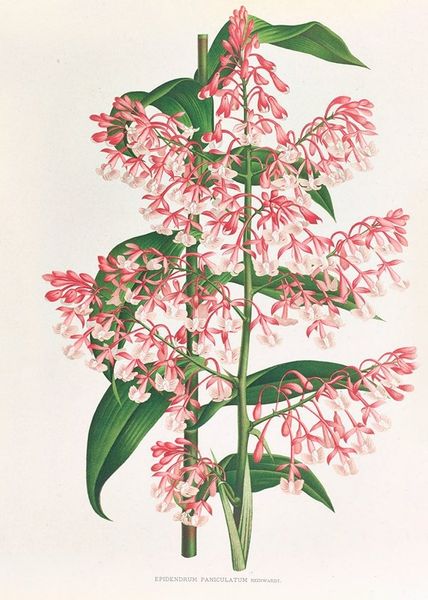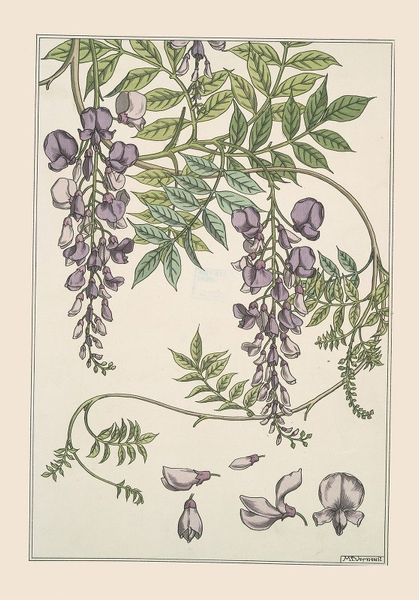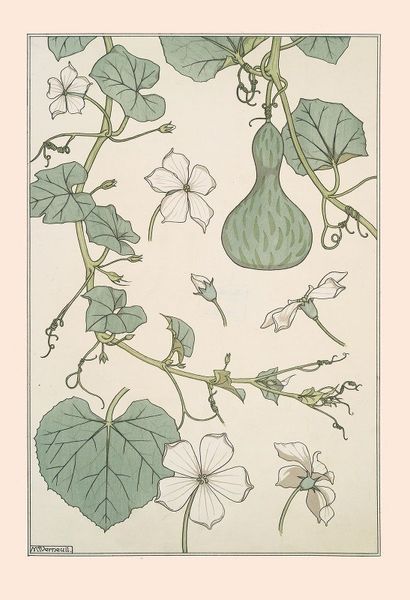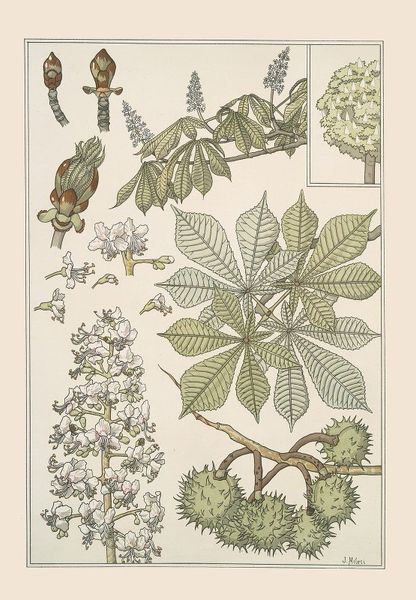
#
naturalistic pattern
#
pastel soft colours
#
joyful generate happy emotion
#
pattern background
#
ethnic pattern
#
organic pattern
#
flower pattern
#
textile design
#
layered pattern
#
pattern in nature
Copyright: Public Domain: Artvee
Curator: This image has such a gentle feeling. It reminds me of those quiet, happy moments when spring arrives, doesn't it? Editor: Indeed. Let me introduce it properly. This is “Lilas,” or “Lilacs,” created by Maurice Pillard Verneuil in 1896. We're looking at a study in botanical art, seemingly designed for textiles or wallpaper. Curator: I’m struck by its balance. The lilac blossoms on one side are countered by the broader, paler green leaves on the other. It's a symphony of soft color and subtle textures, the linear design, and pastel tones feel almost… soothingly repetitive. Editor: Repetition is key here, wouldn’t you agree? Consider the rise of the *Art Nouveau* movement during this period. There was a huge demand for repeating patterns across various decorative art forms. Verneuil contributed significantly to this movement; here, he showcases how natural forms can become endlessly captivating motifs. Curator: I noticed the precise linework. The drawing defines each petal and leaf. It is so elegant. Verneuil’s composition emphasizes shape and line above pure representation, making the whole a study of abstract forms found in nature. Editor: Precisely. He aimed to reveal the intrinsic order underlying the natural world. But context is vital too! France in the 1890s was deeply engaged in discourses of aestheticism, striving to incorporate art into daily life. Verneuil's lilacs weren't intended just for art galleries, but for homes, public spaces…to democratize beauty, so to speak. Curator: So, it’s about bringing refined design to the masses through textiles and wallpapers. It becomes part of one’s surroundings, doesn’t it? Editor: Exactly. These repeating designs fostered a specific kind of environment, aligning everyday life with artistic principles. So this lilac is not merely decorative but culturally significant. Curator: Reflecting on the gentle repetition, I see a meditation on natural rhythms… a way to reconnect people with the world. Editor: Yes, it underscores the democratizing role art could play within society. I find that powerful.
Comments
No comments
Be the first to comment and join the conversation on the ultimate creative platform.
